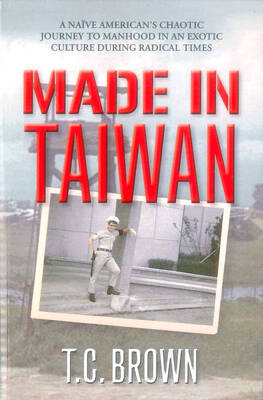Fossil fuel firms are misleading the public about their moves to cut greenhouse gases and curb climate change — and social media are hosting ads that perpetuate this “greenwashing,” researchers say.
TALKING THE TALK
Many companies have vowed to reach the “net zero” level of greenhouse gas emissions needed to keep global warming below 1.5 degrees Celsius under the Paris climate accords, the threshold established by scientists for avoiding the worst impacts.

Photo: Reuters
At the same time, research shows, they are advertising and lobbying for more drilling and burning of the fossil fuels that are heating the Earth’s surface.
Leaders and businesspeople agree that changing how we warm our homes and power industries is no simple task.
But critics say the gap between slogans and action undermines meaningful efforts to cut emissions.
In a study published by the open-access science journal PLOS, scientists analyzed the gap between talk and deeds on climate and low-carbon energy by four big oil companies: BP, Shell, ExxonMobil and Chevron.
Their green strategies “are dominated by pledges rather than concrete actions,” concluded the study, under lead author Mei Li of Tohoku University in Japan.
“Until actions and investment behavior are brought into alignment with discourse, accusations of greenwashing appear well-founded.”
A search on the Facebook pages of big oil and gas firms and the social platform’s Ad Library shows that companies are posting green slogans while also running ads urging customers to “fill up your tank” or win “a year’s worth of gasoline”.
Contacted by AFP, the companies detailed plans to develop lower-carbon energy sources and measures such as carbon capture and storage — a method currently not advanced enough to be very helpful, according to the International Energy Agency (IEA).
ExxonMobil and Chevron spokespeople insisted that due to energy demand, the scenarios foreseen by the Paris deal and the IEA mean fossil fuels will have to play a part in the transition.
WALKING THE WALK
Watchdogs also see greenwashing in environment-friendly but limited gestures by firms that campaigners say distract attention from their climate-harming operations.
Digital monitor Eco-Bot.net monitors cases where an online post “selectively discloses the company’s credentials or portrays symbolic actions to build a friendly brand image.”
It flagged ads and posts on protecting silkworms (Mexican cement firm Cemex), frogs (gas firm TransCanada), possums (Eletronuclear, subsidiary of Brazilian power firm Eletrobras), forests (various companies, including Spanish oil company Repsol) and one by US giant ExxonMobil on recycling fishing ropes in Patagonia. New York-based greenwashing researcher Genevieve Guenther told AFP the key is to measure pledges against two standards: the UN Intergovernmental Panel on Climate Change’s (IPCC) net-zero date of 2050 and the IEA’s clean 2021 energy transition roadmap.
The latter says that to meet the 2050 target there would have to be “no investment in new fossil fuel supply projects” from now on. Any company planning new investments while also trumpeting net zero targets, Guenther said, is guilty of greenwashing.
DELAYING TACTICS
An analysis by London-based research group InfluenceMap showed the five biggest publicly traded oil and gas companies spent US$1 billion over three years to push misleading climate messages on Facebook.
Such amounts are small compared to the billions in revenues of Big Tech and Big Oil — for the latter, the two biggest US companies swung into combined profits of over US$38 billion in 2021.
But pushing messages via social media has an outsize impact, said Melissa Aronczyk, an associate communications professor at Rutger University who has co-authored several studies on the subject.
“It is very easy and inexpensive to produce ads and campaigns for social media that can have a massive effect,” she said. Facebook says it monitors ads for misleading content just as it does with other forms of information on its platforms.
InfluenceMap analyzed thousands of documents “to build up a very detailed picture of how major companies and industry groups are engaging on climate policy and how they are trying to influence debate,” said program manager Faye Holder.
“This greenwashing is essentially a tactic to delay government regulation. It also has the potential to mislead the public, by convincing them that action is already being taken on climate while Big Oil continues to lobby behind the scenes for new oil and gas development.”
In the United States, a Democrat-led committee has been hounding the big oil firms over their lobbying.
“Much of the lobbying has been indirectly done, cleverly, skilfully, cynically done by industry trade groups that have been formed by these companies,” Democratic congressman John Sarbanes told the committee on Feb. 8.
“It is often very hard to disentangle the web of relationships and the sources of funding.”

By 1971, heroin and opium use among US troops fighting in Vietnam had reached epidemic proportions, with 42 percent of American servicemen saying they’d tried opioids at least once and around 20 percent claiming some level of addiction, according to the US Department of Defense. Though heroin use by US troops has been little discussed in the context of Taiwan, these and other drugs — produced in part by rogue Chinese Nationalist Party (KMT) armies then in Thailand and Myanmar — also spread to US military bases on the island, where soldiers were often stoned or high. American military policeman

Under pressure, President William Lai (賴清德) has enacted his first cabinet reshuffle. Whether it will be enough to staunch the bleeding remains to be seen. Cabinet members in the Executive Yuan almost always end up as sacrificial lambs, especially those appointed early in a president’s term. When presidents are under pressure, the cabinet is reshuffled. This is not unique to any party or president; this is the custom. This is the case in many democracies, especially parliamentary ones. In Taiwan, constitutionally the president presides over the heads of the five branches of government, each of which is confusingly translated as “president”

An attempt to promote friendship between Japan and countries in Africa has transformed into a xenophobic row about migration after inaccurate media reports suggested the scheme would lead to a “flood of immigrants.” The controversy erupted after the Japan International Cooperation Agency, or JICA, said this month it had designated four Japanese cities as “Africa hometowns” for partner countries in Africa: Mozambique, Nigeria, Ghana and Tanzania. The program, announced at the end of an international conference on African development in Yokohama, will involve personnel exchanges and events to foster closer ties between the four regional Japanese cities — Imabari, Kisarazu, Sanjo and

Sept. 1 to Sept. 7 In 1899, Kozaburo Hirai became the first documented Japanese to wed a Taiwanese under colonial rule. The soldier was partly motivated by the government’s policy of assimilating the Taiwanese population through intermarriage. While his friends and family disapproved and even mocked him, the marriage endured. By 1930, when his story appeared in Tales of Virtuous Deeds in Taiwan, Hirai had settled in his wife’s rural Changhua hometown, farming the land and integrating into local society. Similarly, Aiko Fujii, who married into the prominent Wufeng Lin Family (霧峰林家) in 1927, quickly learned Hoklo (commonly known as Taiwanese) and